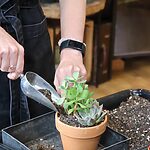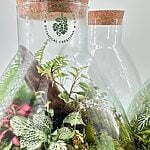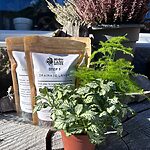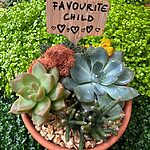Perlite vs. Vermiculite: Understanding their uses, differences, and best applications for gardening and plant care.
When it comes to improving soil for gardening, perlite and vermiculite are two of the most popular amendments. Both of these materials play essential roles in creating the ideal growing environment for plants, but they have distinct properties and are best suited for different types of plants and uses. In this article, we’ll explore the characteristics of perlite and vermiculite, their differences, and similarities, and how to use them effectively in your garden.
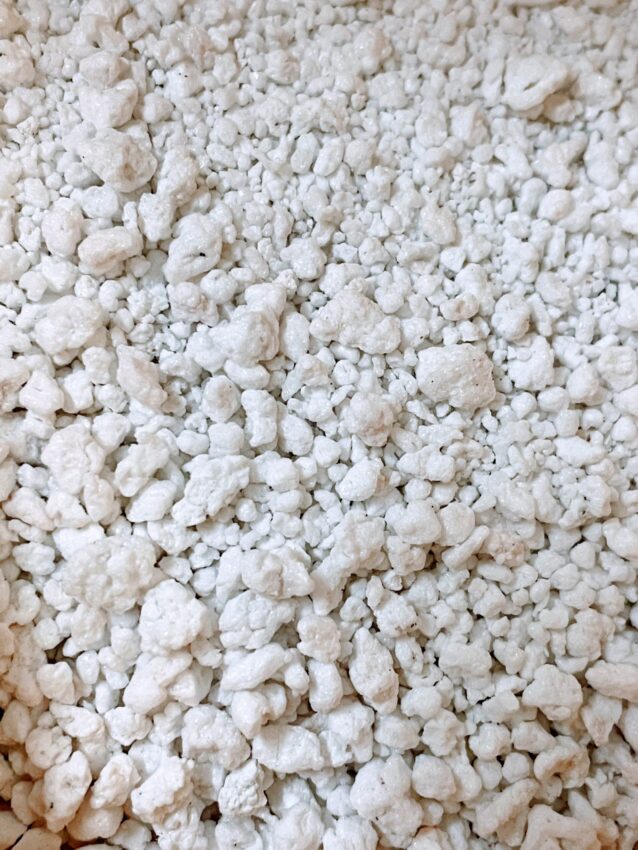
What is Perlite?
Benefits of Perlite:
“Popcorn” of the Soil World: Just like popcorn, perlite expands when heated. When exposed to temperatures of around 871°C (1,600°F), it can expand up to 20 times its original size due to the trapped water turning into steam and causing the rock to expand.
Light as a Feather: Perlite is incredibly lightweight. Despite its volcanic origins, the expanded form of perlite is so light that it can float on water!
Neutral pH: Perlite has a neutral pH of around 7-7.5, which means it doesn’t affect the pH balance of the soil, making it a versatile component in various gardening applications.
Multifunctional Material: Beyond gardening, perlite is also used in construction (as an insulator and lightweight aggregate), filtration, and even in the food and beverage industry for filtering and processing liquids.
Eco-Friendly: Perlite is a naturally occurring, non-toxic, and recyclable material. It’s often used in organic gardening and sustainable practices because it doesn’t decompose or rot.
Inert and Sterile: Perlite is inert, meaning it doesn’t react with chemicals or break down over time. It’s also sterile, which means it’s free from any pests, diseases, or weed seeds, making it an ideal growing medium for sensitive plants.
NASA Uses Perlite: Perlite has even been used in space exploration! NASA has utilized it as a growing medium for experiments on plant growth in space due to its lightweight and water-retaining properties.

What is Vermiculite?
Benefits of Vermiculite :
Naturally Occurring Mineral: Vermiculite is a natural mineral formed through the weathering of biotite or phlogopite mica. It undergoes expansion when heated, making it a useful material in various applications.
Expands Like Magic: Exposing vermiculite to high temperatures, around 300°C, causes it to expand rapidly. This process, known as exfoliation, increases its size by up to 30 times. As it expands, vermiculite becomes highly absorbent and lightweight, making it ideal for many uses.
Water Retention Wonder: Vermiculite excels at retaining moisture. Its unique structure absorbs water and nutrients, then releases them gradually over time. This makes it perfect for potting mixes and soil amendments that need improved water retention.
pH Neutral and Non-toxic: With a pH between 7 and 7.5, vermiculite won’t alter soil acidity. Its non-toxic nature also makes it a safe and reliable choice for both gardening and horticulture.
Versatile and Multi-Use: Beyond gardening, vermiculite has multiple uses in construction, where it acts as an insulator and lightweight aggregate. Its heat-resistant properties make it valuable in packaging and fireproofing materials as well.
Eco-Friendly and Sustainable: Vermiculite is an environmentally friendly material. It is naturally occurring, non-toxic, and can be recycled, making it an excellent choice for eco-conscious gardeners and builders.
Sterile Growing Medium: Like perlite, vermiculite is sterile and free of diseases, pests, and weed seeds. This makes it ideal for seed starting, propagation, and growing sensitive plants.
Used in Hydroponics and Horticulture: Vermiculite often serves as a growing medium in hydroponics due to its excellent water-retentive properties and lightweight structure. Its ability to hold both water and nutrients supports plant roots, which in turn promotes healthier and stronger growth.
Vermiculite and Perlite In potting mixes
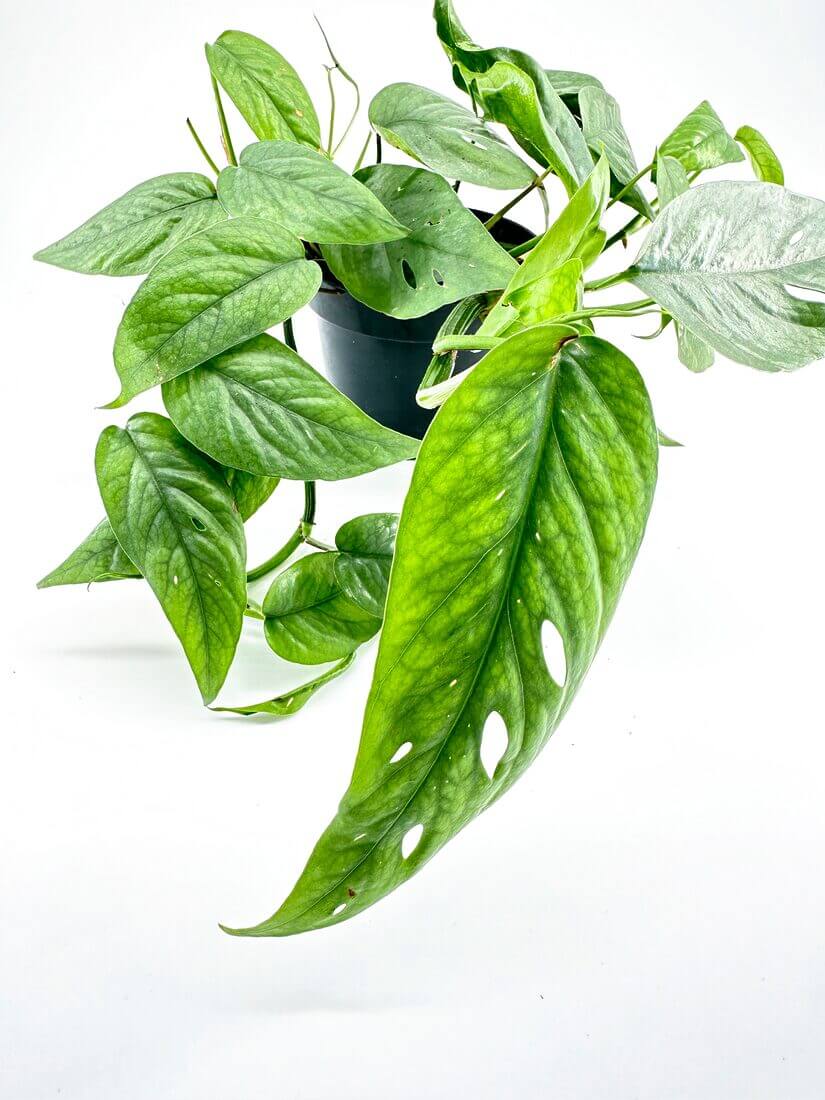
Plants That Benefit from Using Perlite in Their Potting Mix:
- Spider Plant (Chlorophytum comosum)
- Aloe Vera (Aloe barbadensis miller)
- Jade Plant (Crassula ovata)
- Snake Plant (Sansevieria trifasciata or Dracaena trifasciata)
- Pothos (Epipremnum aureum)
- Succulents (Various species like Echeveria, Sedum, and Sempervivum)
- Cactus (Various species like Gymnocalycium, Opuntia, and Mammillaria)
- Peace Lily (Spathiphyllum)
- Fiddle Leaf Fig (Ficus lyrata)
- Zebra Plant (Aphelandra squarrosa)
- Rubber Plant (Ficus elastic)
- Philodendron (Various species like Philodendron hederaceum and Philodendron Brasil)
- Monstera (Monstera deliciosa)
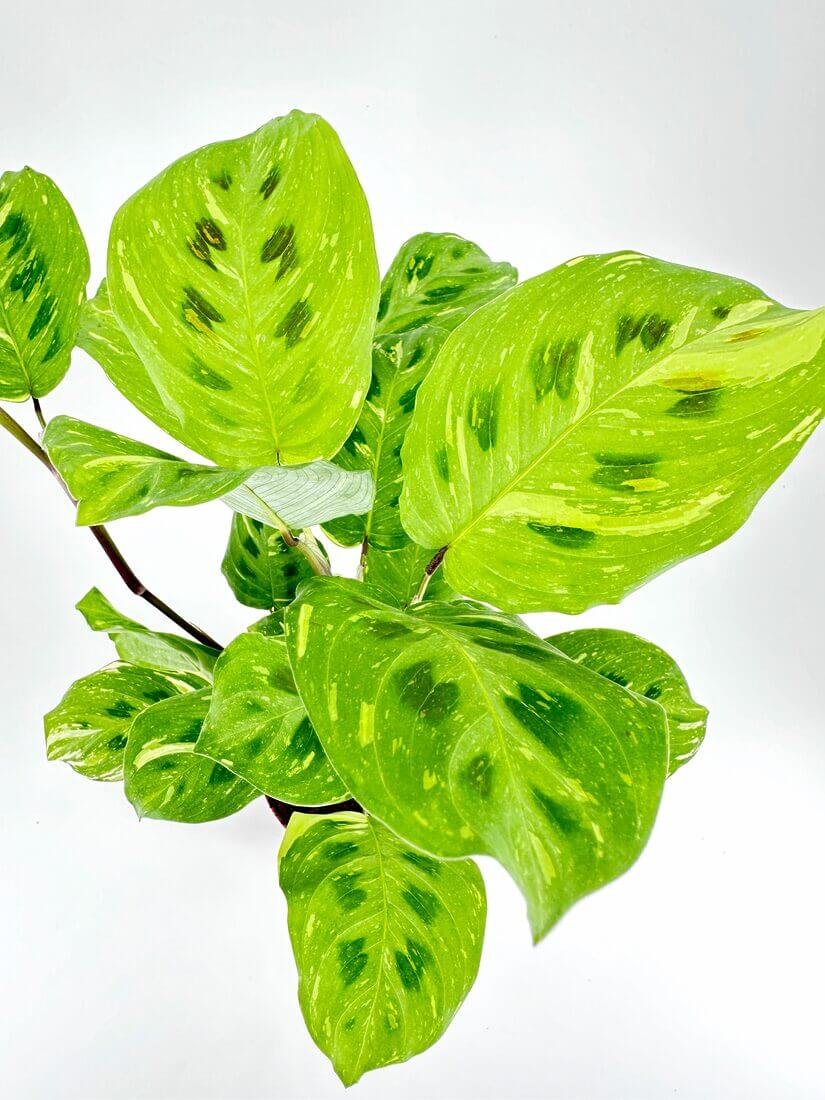
Plants That Benefit from Using Vermiculite in Their Potting Mix:
- African Violet (Saintpaulia)
- Begonias (Various species like Begonia maculata and Begonia rex)
- Ferns (Various species like Asparagus setaceus and Boston FernNephrolepis exaltata)
- Peace Lily (Spathiphyllum)
- Orchids (Various species like Phalaenopsis and Cattleya)
- Seedlings and Young Plants (General use for starting seeds or propagating cuttings)
- Hydrangea (Hydrangea macrophylla)
- Peperomia (Various species like Peperomia obtusifolia and Peperomia argyreia)
- Coleus (Solenostemon scutellarioides)
- Tomatoes (Solanum lycopersicum)
- Mint (Mentha)
- Basil (Ocimum basilicum)
- Calathea (Calathea orbifolia, Calathea lancifolia)
Key Differences Between Perlite and Vermiculite
Water Retention vs. Drainage
Perlite: Perlite retains some water but is primarily known for its ability to improve drainage. It doesn’t hold onto water for long, making it ideal for plants that require well-drained soil.
Vermiculite: Vermiculite retains a significant amount of water due to its ability to expand and hold moisture within its layers. It releases water slowly, making it suitable for plants that need a consistently moist environment.
Longevity
Perlite: Perlite is durable and does not break down over time. It retains its structure and function in the soil indefinitely, making it a long-lasting amendment.
Vermiculite: Vermiculite can degrade and compact over time, particularly if used in outdoor environments or with repeated watering, which can reduce its effectiveness in aerating soil.
Discover the benefits of perlite and vermiculite!
These staples of every indoor and outdoor gardener’s toolkit are versatile, must-have components for any potting mix. They are also incredibly useful for propagation, seed germination, and seed trays, helping to create the ideal environment for healthy plant growth.
How to Use Perlite and Vermiculite in Gardening
Using Perlite:
- In Potting Mixes: To improve aeration and drainage, mix perlite into your potting soil. This is particularly effective for succulents, cacti, and other plants that need well-drained soil, helping them thrive in the right conditions.
- For Propagation: Use perlite to root cuttings by combining it with soil, ensuring a balanced moisture level without waterlogging.
- In Seed Trays: Incorporate perlite into seed trays to create a light, airy medium that promotes strong root development
Using Vermiculite:
- For Moisture-Loving Plants: To maintain consistently moist conditions, you can easily incorporate vermiculite into the soil. This works especially well for moisture-loving plants like ferns and peace lilies, ensuring they thrive in their ideal environment.
- In Seed Germination: Vermiculite is excellent for starting seeds, providing a moisture-rich environment that fosters early growth.
- In Propagation: Use vermiculite alone or mixed with other mediums to maintain consistent hydration for cuttings and seedlings.
Conclusion
Both perlite and vermiculite are indispensable tools in gardening, whether you’re focused on indoor houseplants, outdoor gardening, or propagation of cuttings and seeds. Understanding their unique properties and knowing when to use each can significantly enhance plant care, making your garden thrive. Whether you’re a beginner or an experienced gardener, integrating these amendments into your plant care routine will yield healthier, more vibrant plants.



